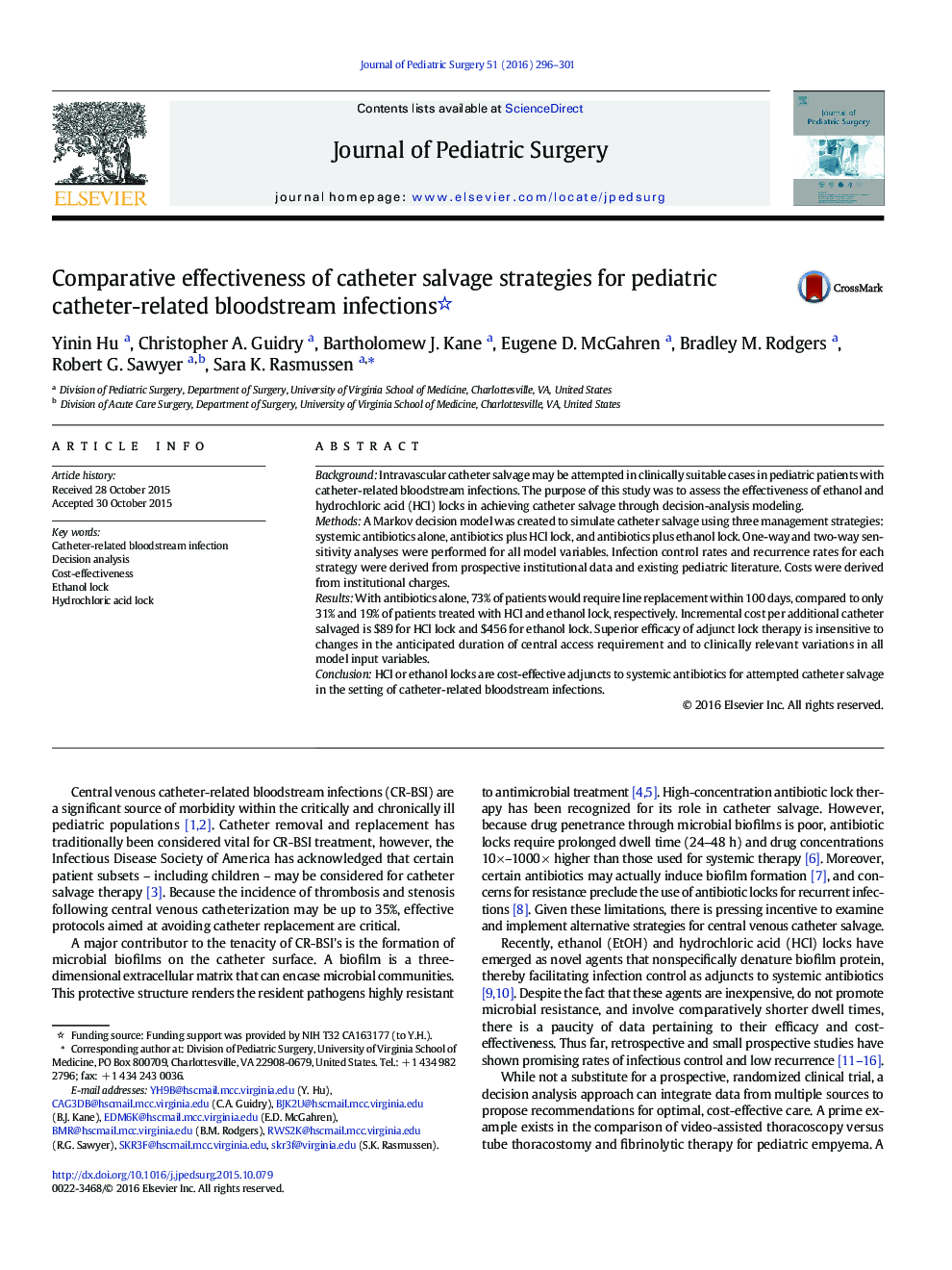| Article ID | Journal | Published Year | Pages | File Type |
|---|---|---|---|---|
| 4154967 | Journal of Pediatric Surgery | 2016 | 6 Pages |
BackgroundIntravascular catheter salvage may be attempted in clinically suitable cases in pediatric patients with catheter-related bloodstream infections. The purpose of this study was to assess the effectiveness of ethanol and hydrochloric acid (HCl) locks in achieving catheter salvage through decision-analysis modeling.MethodsA Markov decision model was created to simulate catheter salvage using three management strategies: systemic antibiotics alone, antibiotics plus HCl lock, and antibiotics plus ethanol lock. One-way and two-way sensitivity analyses were performed for all model variables. Infection control rates and recurrence rates for each strategy were derived from prospective institutional data and existing pediatric literature. Costs were derived from institutional charges.ResultsWith antibiotics alone, 73% of patients would require line replacement within 100 days, compared to only 31% and 19% of patients treated with HCl and ethanol lock, respectively. Incremental cost per additional catheter salvaged is $89 for HCl lock and $456 for ethanol lock. Superior efficacy of adjunct lock therapy is insensitive to changes in the anticipated duration of central access requirement and to clinically relevant variations in all model input variables.ConclusionHCl or ethanol locks are cost-effective adjuncts to systemic antibiotics for attempted catheter salvage in the setting of catheter-related bloodstream infections.
